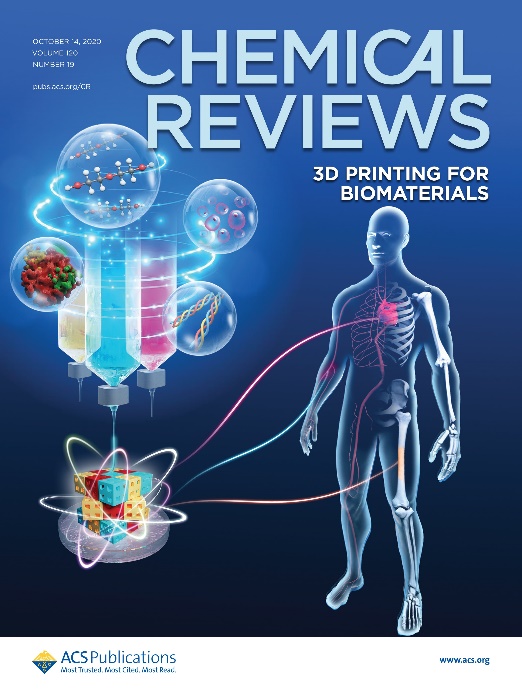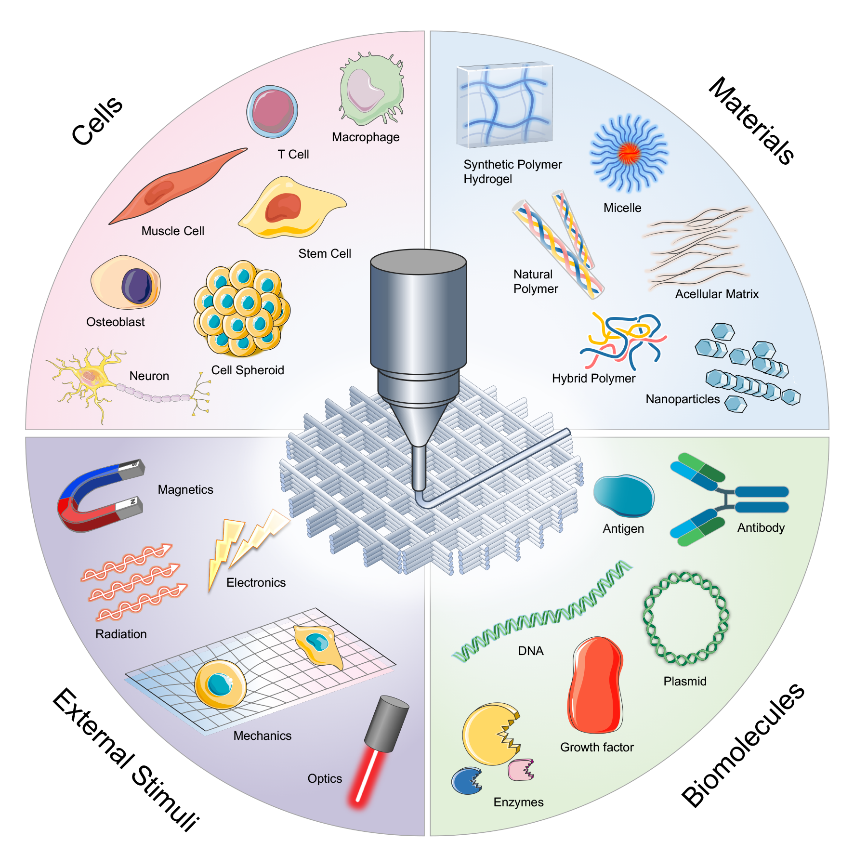On October 14, Chemical Reviews (IF=52.7), the international famous journal, published the 49-page review article “Polymeric Systems for Bioprinting” by Prof. Shengmin Zhang from Huazhong University of Science and Technology and Prof. Antonios G. Mikos from Rice University as the corresponding authors. The latest advances of bioprinting science, products standards and regulation science in the polymeric system above were reviewed in this article, which was selected as the front cover story of the latest issue (Figure 1).

Figure 1. The article was selected as the front cover of the latest issue in Chemical Reviews on October 14, 2020.
Bioprinting is the precise, 3D patterning of biomaterials, cells, and bioactive molecules which enables the fabrication of multiscale tissue engineering scaffolds, living cell-laden constructs, and physiologically relevant organoids (Figure 2). In this article, polymeric systems for bioprinting are systematically discussed, including natural and synthetic polymers, single and multi-material bio-ink systems, polymer nanocomposite bio-ink systems, etc., as well as strategies to improve the printability of bio-inks and maintain cell viability. In addition, the whole industrial chain outlook and forecast were made in the aspects of 3D- and 4D- bio-printing material systems, standardization, manufacturing, approval and regulation, and applications of bioprinted medical devices and products, etc.
Prof. Shengmin Zhang from Huazhong University of Science and Technology (HUST) and Professor Antonios G. Mikos from Rice University are the co-corresponding authors of the paper. Dr. Yingying Du from HUST is one of the co-first authors.

Figure 2. Bioprinting can realize the next generation of the tissue engineering paradigm through material-based innovations, combining cells/biomolecules, and physical stimulation, the fourth element of tissue engineering.
The article link: https://pubs.acs.org/doi/pdf/10.1021/acs.chemrev.9b00834